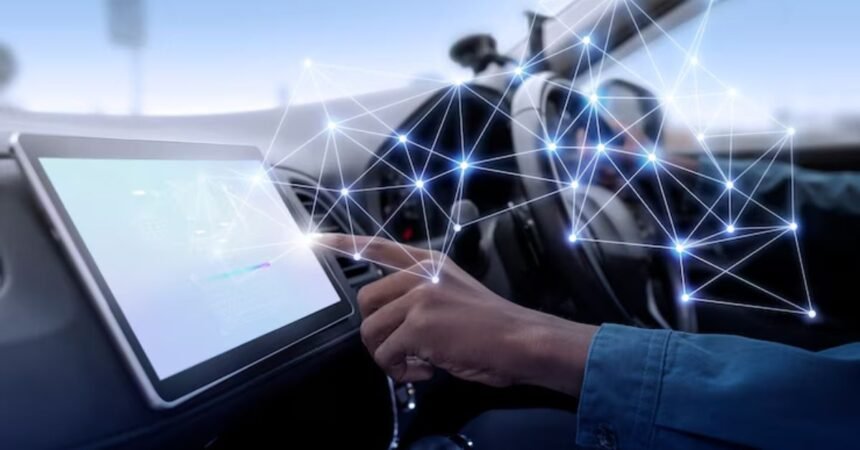In transportation, accurate monitoring is vital for safety, compliance, and efficiency. One technology leading this movement is the fartskriver, often known in English as a tachograph. Developed to record driving speed, distance, and time, the fartskriver helps ensure that drivers adhere to mandated limits on hours and speed. Innovators like Fredrik Taaje have greatly advanced fartskriver technology, making it more reliable, accurate, and user-friendly.
This article explores the concept, benefits, applications, and challenges of fartskriver technology, with a focus on Fredrik Taaje’s contributions. By understanding the function and importance of fartskriver systems, fleet managers, drivers, and regulators can work together to enhance transportation safety.
1. Understanding Fartskriver Technology
The fartskriver, or tachograph, is a device designed to record the speed, distance, and driving hours of vehicles. Primarily used in commercial and public transportation, fartskriver technology enforces safe driving practices and legal compliance with driving regulations.
2. Fredrik Taaje: Pioneer in Fartskriver Advancements
Fredrik Taaje has made a significant impact on fartskriver technology, working to improve its functionality, accuracy, and reliability. Through his innovations, Taaje has expanded the technology’s application beyond just data recording, adding features that support driver compliance and enhance fleet management.
3. How the Fartskriver Works
The fartskriver operates by connecting to the vehicle’s transmission and recording data based on its speed and movement. The device continuously collects real-time information on driving speeds, rest times, and distances traveled. This data is then stored in the device’s memory for future retrieval and analysis, providing a clear picture of the vehicle’s activities over time.
4. Core Components of Fartskriver Devices
Fartskriver technology consists of multiple components, each serving a specific purpose:
- Speed Sensor: Measures the vehicle’s speed, recording changes over time.
- Time Module: Tracks driving and rest periods, ensuring adherence to legal time limits.
- Data Storage: Stores collected data securely, allowing authorized personnel to access and review it.
- Display Screen: Provides real-time data for drivers, including alerts for required rest periods.
- Data Output Port: Allows data transfer to external systems for analysis and compliance checks.
5. Why Fartskriver Technology is Essential
Fartskriver technology is essential for promoting road safety and regulatory compliance, especially in the commercial transportation industry. With accurate data on driving patterns, transportation companies can ensure drivers remain within legal boundaries, reducing risks associated with fatigue and excessive speed.
6. Key Benefits of Using Fartskriver Systems
Enhanced Road Safety
The fartskriver supports safer roads by helping prevent driver fatigue. By enforcing mandatory rest periods, the technology reduces the likelihood of accidents caused by drowsiness.
Legal Compliance and Regulation Adherence
In many regions, fartskriver devices are required by law for commercial vehicles. They ensure compliance with regulations governing speed limits, driving hours, and required rest periods.
Improved Data Accuracy
Modern digital fartskriver systems offer high data accuracy, with tamper-resistant storage that helps verify compliance and prevents data manipulation.
Efficient Fleet Management
The data gathered from fartskriver systems allows fleet managers to make informed decisions, optimize driving routes, and monitor overall fleet performance.
7. Applications of Fartskriver Technology in Various Sectors
While fartskriver technology originated in commercial transportation, its applications now extend to multiple industries, including logistics, public transit, and emergency services.
8. Real-World Use Cases of Fartskriver Systems
Logistics and Freight Transportation
In logistics, the fartskriver provides essential data that helps manage large fleets, ensuring timely deliveries while upholding safety standards.
Public Transit
Public transit operators use fartskriver technology to maintain service schedules and ensure drivers comply with mandated rest times, enhancing passenger safety and service reliability.
Emergency Response Vehicles
In emergency services, fartskriver technology optimizes speed management while ensuring drivers adhere to legal guidelines, even in high-pressure scenarios.
9. Compliance and Regulatory Standards with Fartskriver
Fartskriver devices are mandatory in many regions for commercial vehicles over a certain weight. These regulations specify data recording intervals, speed limits, and driver rest periods, helping to standardize safety practices across the industry.
10. Challenges in Fartskriver Implementation
Despite its benefits, implementing fartskriver technology can present certain challenges:
- Driver Resistance: Some drivers perceive fartskriver monitoring as restrictive, creating resistance.
- Technical Failures: Mechanical or digital malfunctions can disrupt data accuracy.
- Data Interpretation Difficulties: Raw data from fartskriver devices may require expert analysis to extract actionable insights.
11. Addressing Common Misconceptions about Fartskriver
Several misconceptions about fartskriver technology can impact its effective use. Common myths include:
- Privacy Invasion: Some drivers worry about privacy, although fartskriver data only relates to operational driving information.
- Constant Surveillance Misconception: Fartskriver devices do not track drivers’ personal activities or off-duty movements.
12. Solutions to Overcome Fartskriver Challenges
Driver Training and Education
Educating drivers on fartskriver’s benefits, such as enhanced safety and fewer accident risks, can improve acceptance and adherence to regulations.
Transitioning to Digital Fartskriver Models
Digital fartskriver models are more reliable, provide higher data accuracy, and are often easier to maintain, reducing technical issues.
Software Integration for Easier Data Analysis
Fleet management platforms that integrate fartskriver data offer real-time insights, simplifying data interpretation and improving operational decision-making.
13. How Fartskriver Data Aids in Accident Investigations
In the case of an accident, fartskriver data provides objective records of speed, distance, and driver rest times. This information can clarify whether regulations were followed and support fact-based conclusions during investigations.
14. Integrating Fartskriver Data into Fleet Management Systems
Integrating fartskriver data into digital fleet management systems streamlines many operational processes:
- Real-Time Monitoring: Managers can observe vehicle activities in real-time, promoting quick responses.
- Automated Compliance Checks: Automated reports simplify compliance audits and regulatory checks.
- Predictive Analytics: Insights from past data trends help prevent issues before they arise, improving overall fleet performance.
15. Future Prospects of Fartskriver Technology
Fartskriver technology continues to evolve, with future improvements likely to include:
- Enhanced Connectivity: Integration with GPS and wireless networks for live data tracking.
- Improved Interface Designs: User-friendly displays that help drivers monitor real-time compliance.
- AI and Predictive Analytics: Advanced analytics to anticipate potential issues based on historical driving patterns.
16. Conclusion
Fredrik Taaje Fartskriver advancements in fartskriver technology have played a significant role in transforming commercial transportation. By providing accurate data and improving driver accountability, fartskriver technology has become essential for fleet safety and regulatory compliance. Despite challenges, fartskriver devices have helped raise safety standards across multiple industries, with new innovations continually expanding their capabilities.
17. FAQs
1. What is a fartskriver, and how does it work?
A fartskriver, or tachograph, records speed, driving hours, and rest intervals, helping to ensure driver compliance with safety regulations.
2. Why is Fredrik Taaje notable in fartskriver technology?
Fredrik Taaje is recognized for his contributions to fartskriver technology, making it more reliable and efficient.
3. Are fartskriver devices required by law?
In many regions, commercial vehicles must use fartskriver devices to comply with regulations on driving hours and speed limits.
4. Can drivers tamper with fartskriver data?
Modern fartskriver systems use encrypted digital storage, which prevents tampering and preserves data integrity.
5. How does fartskriver data improve safety?
By enforcing speed limits and mandatory rest times, fartskriver data helps reduce accidents related to driver fatigue and excessive speed.




